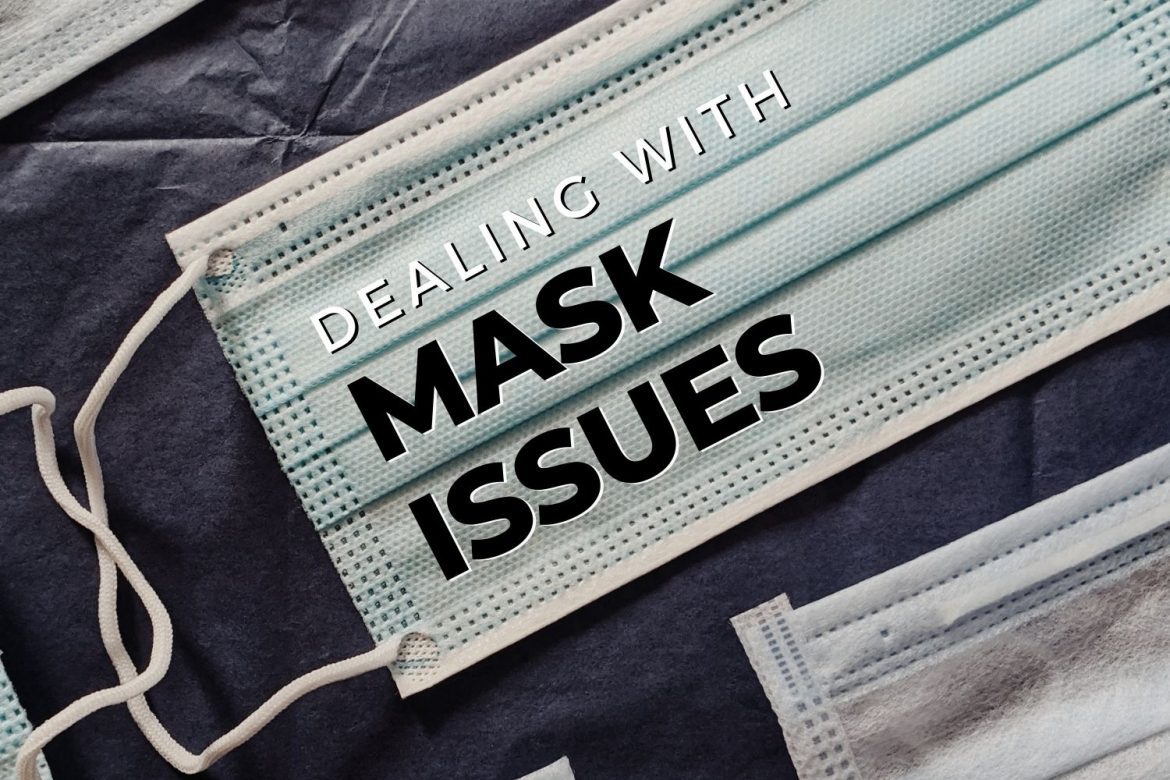1987 total views , 8 views today
Sadly, right now, you need to wear a mask when you’re out in public interacting with others.
This is clear, but as a result, your vision may be unclear.
For those who wear glasses, the most common complaint is foggy lenses. Another is dry eyes. They may not be perfect, but there are remedies for both. Let’s have a look.
Foggy lenses are no fun
Put on your mask, take a nice deep breath, exhale and your glasses get foggy. It definitely isn’t going to help you enjoy your shopping experience—or whatever you may be doing.
What’s happening? It’s simple. Moisture from your breath escapes through the top of the mask onto your glasses and creates fog. When warm air meets a cool surface, condensation results. The same thing often happens when you’re out in the cold winter air and return to your warm home.
The amount of fogging you experience will vary. It depends on your mask, glasses, and even your facial structure.
What can you do?
First, focus on the cause of the problem, the seal. Roni Levin, MD, at the University of Maryland School of Medicine, says having the right mask and the right fit is more important than anti-fogging solutions.
“As an eye surgeon, for years I have been placing a strip of tape along the top of my surgical mask in the operating room to prevent my glasses or microscope from fogging,” she says. “I have now extended this practice to my patients, and often put a strip of tape along the top of their mask to prevent my lenses from fogging during the eye exam.”
Try these things to create a better seal:
- Tighten your mask with its straps.
- Try resting your glasses over the top of your face mask to create a tighter seal.
- Use masks with wire that bends to the shape your nose.
- Otherwise, place a strip of tape across the top of your mask.
You can also try the following:
- Apply an anti-fog spray on your lenses, such as this one.
- Wash your lenses with warm soapy water or a commercial defogging solution. Air dry them or use a clean dry cloth. Doing so will leave behind a thin film that helps prevent condensation from forming on the lenses. Make sure the product won’t harm the anti-reflective coatings you may have on your lenses.
- Consider choosing lenses with an anti-fog coating.
Finally, you can switch to wearing contact lenses.
Wearing a mask may cause dry eye
Have your eyes been bothering you since you began wearing masks? It can happen whether you wear glasses or not. And it happens so often, it’s been given a name and acronym: mask-associated dry eye (MADE).
According to the journal Ophthalmology and Therapy, there has been an increase in dry eye symptoms among regular mask users. Researchers at the University of Utah claim the patients include people who have never struggled with dry eye in the past. Additionally, those who use masks for long periods of time are more likely to develop symptoms.
Dry eye is a condition that occurs when your tears aren’t providing proper lubrication for your eyes. The NEI says dry eye syndrome affects nearly 5 million Americans—and causes symptoms, including a scratchy feeling, stinging, red eyes, sensitivity to light, and blurry vision. (Get more information on dry eye syndrome here.)
NEI authors suspect mask-induced dry eye is caused by an airflow issue. That is, air flows through a loose-fitting mask up and across the surface of your eyes to dry them out.
What’s more, the irritation may cause you to rub your eyes. An article on the American Optometric Association’s site, cites Michael Duenas, O.D., AOA chief public health office, who explains rubbing your eyes should be avoided as the eye is a route of SARS-CoV-2 exposure.
Still, abandoning your mask is not advisable. Try the following:
- Again, wear masks that have pliable nose wires along the top which can mold to the bridge of your nose or use paper medical tape to create a seal.
- Use “artificial tears” (eyedrops for dry eyes) throughout the day. A selection of over-the-counter dry eye relief products are offered here.
- Before bed, moisten a washcloth with warm water and gently massage the eyelid margins to remove excess oil that might irritate your eyes.
- Do blinking exercises to coat your eyes with fresh tears. Close your eyes, pause two seconds, then open. Close your eyes again, pause two seconds, then tightly squeeze the lids together for two seconds. Repeat often.
- Give your eyes a break. Thomas Steinemann, M.D, of the American Academy of Ophthalmology, recommends after every 20 minutes spent looking at your computer screen, look at something 20 feet away for 20 seconds. Also, be sure to blink consciously while working on the computer.
If your mask-associated dry eye is severe, you may want to consider wearing sealed goggles. “They look like regular glasses but have silicone cups behind the lens, which create a shield over the eyes to block air and create a moist environment,” says Vivian Shibayama, O.D., an optometrist with UCLA Health, in an interview with AARP.
She also says your eye doctor may recommend trying a fluid-filled gas-permeable contact lens (scleral lens) to encase your eyes in fluid, which can allow more consistent moisture throughout the day.
We feel you. Wearing a mask is no fun. However, despite the development of COVID-19 vaccines, masks will remain part of our daily lives for the foreseeable future. We hope these tips make it easier for you, and the people around you, to stay safe and remain healthy.


